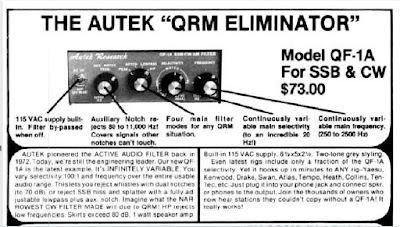I always make it work and learn new things in the process. This year was essentially no different.
We were originally slated to run from the ANZA super station and got preempted at the last minute
by NO6T deciding to run single-OP. Axel (KI6RRN) has trained himself into super-OP status, so it's
a pleasure to yield the station over. His STATs were impressive: 7th w.w., 6th N/A, 3rd USA & 1st for the entire left coast and Southwest; not to mention San Diego.
At the last minute, Phil (WM6Y) stepped up to organize a Multi-Single operation for NX6T on STN-2
in Fallbrook (with STN-1 configured as a backup). This year, I don't believe any of the operators ever needed STN1, except to watch the progress of STN-2 on DXLOG (which was synchronized with STN-1). For various reasons we were short operators, requiring some careful interlaced time planning.
My first shift began at 09:00z (2am). By that time 655 QSOs had already made it into the log. While there were some leftovers on 40 meters, it didn't take long to move down to 75-meters (3737.37) and run a frequency for 90 minutes. A brief trip to 160 (1837.37) brought a whopping 5 QSOs to the log. With an enormously high A-Index and an annoying K-index the noise levels on 80 & 160 were horrendous.
By 11:00z it was back to 40-meters.First stop was ~7.039 and the Russian military beacons. While the "F" and "M" beacons were reasonably loud, the "K" beacon was again AWOL. Altho the "K" beacon is useful, hearing the "F" & "M" beacons give us a more accurate look at deep-Asian propagation.
Despite the horrible propagation, signals from Asia were plentiful. The big surprise was the number of Indonesian stations who flooded 40-meters. In reading soapbox comments, it is clear that other stateside operators had the same experience.
At 11:44 NX6T took over 7139.39. While the Shorty-40 was pointed at Asia, with a barely 20-db F/B-ratio stations from the Southeast also easily came through.
Of course being 40-meters, there was the usual RTTY-QRM (that happens ONLY during Ssb contests), which culminated in a LOUD motor-boat sound. Moving up 2kc got rid of it. Then when
it found me, I moved back to 7139.39. By the time my 4-hour shift was over we were just shy of 800 QSOs in the log. Throughout the day, while I slept and worked with clients another 600+ QSOs made it to the log. At 01:00 when I took over, 20-meters was still viable to both Asia and South America. Rather than rotate the C-31 every two minutes I switched to the Stepp-IR and opened it up for BI-Directional running of both continents, with an occasional stray US/Canada station calling in.
off frequency. Between the R-i-T control and QF-1A filters it was relatively easy to tune them in.
With Stereo Ssb, properly tuned-in stations appear in the "center" of the listening experience.
Low-pitched off-frequency stations appear to the left, while the high-pitched off-frequency stations appear to the right. Correctly tuning a station-in simply requires it to be centered in the listening experience. By the end of my shift we had 1575 QSOs in the log.
While I slept, WM6Y and N6ERD kept things alive. Coming back at 09:00z we were just shy of 1700. Finding an actual "hole" at 7173.73 I kept the frequency going for nearly 90-minutes despite the appearance of our friend the "underwater RTTY" QRM'er.
At 10:45z I found another quiet frequency at 3737.37. 20 minutesin, "Billy BoB and his brother Boris" decided that it was ok to move in on 3.737 for their daily morning ragchew.
When I asked them to please move down I was told to go "F myself. Boris said "you pesky contesters take up the entire band". I reminded them that there is 400-kc of Ssb spectrum (most of it unused at that time of day), saying "do you REALLY have to ragchew EXACTLY on 3.737? You have the rest of the phone band wide-open to you".
After 10 minutes of grumbling Billy Bob and Boris moved on.
At 12:18z 75-meters had been worked out and nothing was happening on 160 so it was time for a return to 40-meters; this time 7141.41, where I was instantly met with RTTY QRM. Why is it RTTY QRM in the 40-meter Ssb spectrum happens ONLY during radiosport contests? At 12:46, a shift
was made to 7142.42 which lasted a whole 3 minutes before ragchewers moved in right above. Miraculously 7141.41 opened up again. By 13:00z I was wiped-out and N6ERD came in to
relieve me - thankfully.
Sunday of course slowed down considerably. While propagation to Asia was decent, by that time most Asian operators are either working or commuting to work Monday morning. Having no specific operator lined up for the afternoon, the last few hours were shared by several OPs while I was off doing other things.
When it was all over according to the 3830 scores website, NX6T took 23rd place overall, 3rd-place for USA and North America and 1st-place for W6, the left coast, Southwest and of course San Diego; not bad for an ad-HOC motley bunch of sideband operators.What about you? DiD YOU work the 2021 Weird Prefix Contest?
Is NX6T in YOUR Log?






























